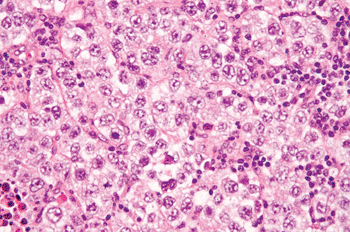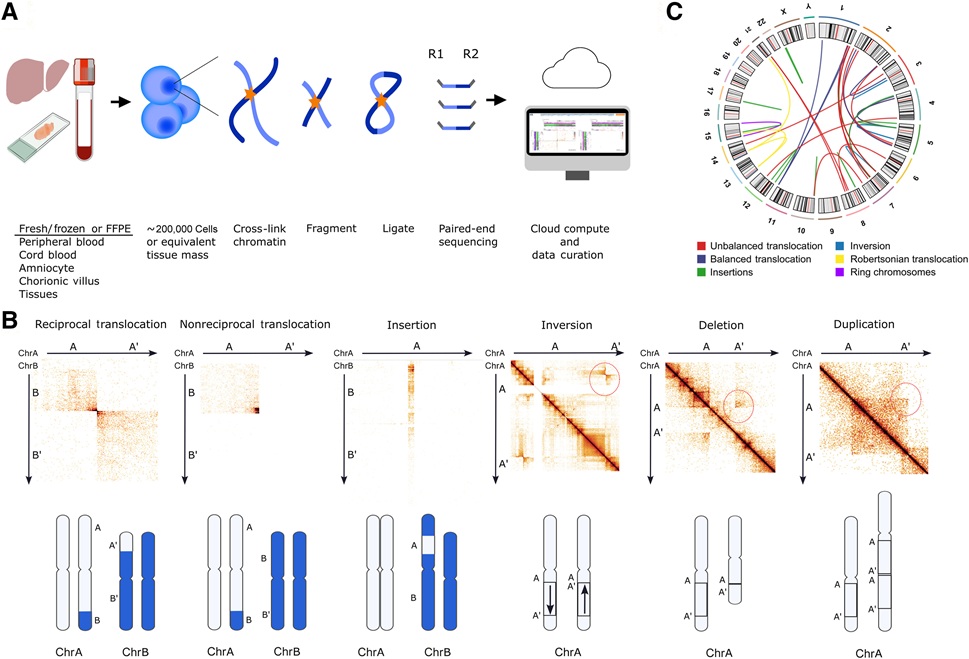Genetic Risk Factors Identified for Testicular Cancer
By LabMedica International staff writers
Posted on 27 May 2013
Four new genetic variants associated with an increased risk of testicular germ cell tumors have been identified allowing for early detection or prevention of the disease. Posted on 27 May 2013
The discovery of these genetic variations in testicular cancer, the most commonly diagnosed type in young men today, could ultimately help doctors understand which men are at high risk.

Image: Histological section of testicular cancer (Photo courtesy of Nephron).
Scientists at the Perelman School of Medicine (University of Pennsylvania, Philadelphia, PA, USA) with their collaborators analyzed 931 affected individuals and 1,975 controls and confirmed the results in an additional 3,211 men with cancer and 7,591 controls. They performed a meta-analysis of the 340 most promising single nucleotide polymorphisms (SNPs), after excluding previously reported loci, observed in the adjusted pooled analysis of the combined data.
The meta-analysis revealed that testicular germ cell tumor risk was significantly associated with markers at four loci—4q22, 7q22, 16q22.3, and 17q22—none of which have been identified in other cancers. Additionally, these loci pose a higher risk than the vast majority of other loci identified for some common cancers, such as breast and prostate. This brings the number of genomic regions associated with testicular cancer up to 17, including eight new ones reported in another study. The team also explained how the variants associated with increased cancer risk are the same genes associated with chromosomal segregation. The variants are also found near genes important for germ cell development. These data strongly supports the notion that testicular cancer is a disorder of germ cell development and maturation.
Katherine L. Nathanson, MD, the senior author said, “This analysis is the first to bring several groups of data together to identify loci associated with disease, and represent the power of combining multiple genome-wide association studies to better identify genetic risk factors that failed to reach genome-wide significance in single studies. Testicular germ cell tumors is unique in that many of the loci are very good biological candidates due to their role in male germ cell development. Disruptions in male germ cell development lead to tumorigenesis, and presumably also to infertility. These conditions have been linked before, epidemiologically, and genes implicated in both of our prior studies, but this study reinforces that connection.”
Incidence rates of testicular cancer have doubled in the past 40 years. It is also highly heritable. If a man has a father or son with testicular cancer, he has a four-to six-fold higher risk of developing it compared to a man with no family history. That increases to an eight-to 10-fold higher risk if the man has a brother with testicular cancer. The study was published on May 12, 2013, in the journal Nature Genetics.
Related Links:
Perelman School of Medicine














